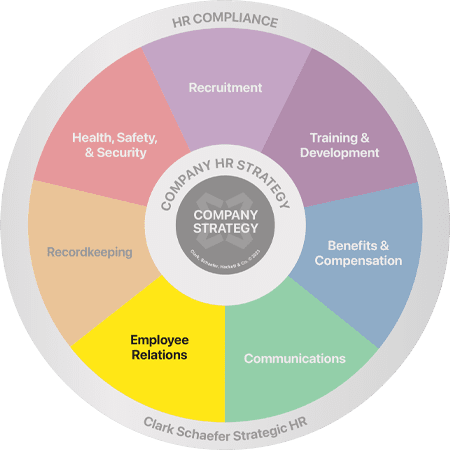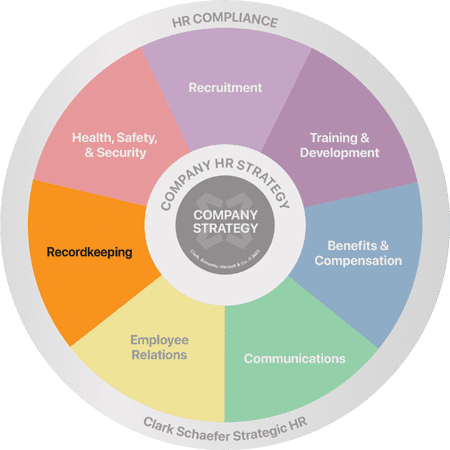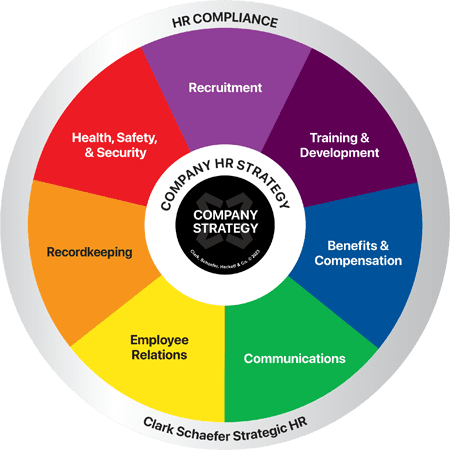What Role Should HR Play in Benefits Open Enrollment to Ensure Success?
Last Updated on October 26, 2025 / Benefits & Compensation

HR Question:
I recently took on the responsibility of overseeing our company’s benefits. Can you offer advice on the role HR should play in benefits open enrollment to ensure its success?
HR Answer:
As many employers, like yourself, are in the midst of planning for benefits open enrollment, it takes me back to the early days in my HR career. During one of my first HR positions, I assumed that my employee benefits broker could effortlessly pull off a stellar enrollment while I worked on other HR priorities. That’s when I learned – the hard way – that a broker cannot work autonomously to assemble and communicate your benefits program.
There’s no doubt that employee benefits brokers play a vital role in any benefits enrollment process. They know what benefits programs are available, which vendors can provide them, and how benefits are priced. An experienced employee benefits broker will also take the time to understand your organization and develop a customized employee benefits plan to meet your workforce’s needs. However, they cannot operate effectively without an HR professional taking a leadership role in the process. Having learned this lesson firsthand, I can share the following suggestions on the role HR should play in making your benefits open enrollment successful.
Identify benefits that give your company a competitive advantage.
Can a well-stocked benefits plan make your company the lead horse in the race for talent or help improve your retention? You bet! In MarshMcLennan’s 2025 Employee Health & Benefits Trends report, they revealed that reducing employee benefits “compromises an organization’s ability to attract and retain talent”. Employers underestimate the value of benefits in retaining employees despite the fact that benefits are typically identified as one of the top reasons employees were looking for new jobs. Employers who present both employees and candidates with a mix of competitive pay AND an enticing selection of health, retirement, ahttps://www.marshmma.com/us/insights/details/employee-health-and-benefits-trends.html#formnd financial benefits can put themselves on the “employer of choice” A-list.
Plan for benefits that fit with workplace changes.
You may have more employees who now work remotely, either full-time or for some days of the week. Their family members are likely also dealing with workplace, school, or daycare changes. Consider benefits plan enhancements that address their needs, such as supplemental child care or elder care support. In addition, it is essential to consider the demographics of your workplace and consider plans that meet your multigenerational workforce. Although health care remains as the most vital benefit to employees according to the SHRM 2025 Benefits Survey, retirement savings and planning benefits along with leave benefits have come in at a close second.
Additional considerations for your benefits plan design include:
- Many employees may have a greater awareness of the need for both short-term and long-term disability benefits and mental health support.
- The use of telemedicine has increased significantly since the pandemic. More employees are now comfortable with receiving virtual care.
- Many employees may want help with financial concerns, like how to best preserve their retirement benefits while balancing financial cash flow needs.
If you’re not sure of what benefits your employees would value most – ask them! Taking the pulse of your employees’ preferences will help you to identify the benefits that they value the most, and perhaps shine a light on benefits that may no longer hold the value they once did.
Leverage the most effective ways to communicate with employees.
You know how to best deliver important messages to your employee audience. Differences in employee ages and life stages, locations (office, manufacturing facility, remote, etc.), and comfort levels with technology have likely driven different communications approaches. Handing out a benefits enrollment form and brochure or mailing it to employees’ homes may be useful for some, but it is only the start of the communications process. HR can play a critical role in making your benefits open enrollment successful by using additional communication tools that speak to broader communication preferences including:
- Text messages. Although email is universally used, could text messaging be a helpful tool for your employees? You know that many of your employees, regardless of age, use texting as a way to get updates. It can also be a great communication tool for employees who work on the road or don’t have consistent access to a computer in their work day. You can use texts to provide prompters, deadlines, or answer questions. You can also use texts to remind employees about underutilized benefits to drive participation.
- Website / Mobile App. Consider providing employees with enrollment information through an online benefits website or mobile app that can be accessed 24/7. This site can be updated throughout the enrollment period with FAQ’s, details of new benefit offerings, and deadline reminders. Contact information may include a chat feature or texting options for questions. You can also add events to make the enrollment process both fun and enlightening, such as quizzes, benefit enrollment scavenger hunts, polls, videos, and infographics.
- Webinars and virtual meetings. Video-based webinars, town hall meetings, and “ask me anything” sessions with members of the benefits team or broker can be effective approaches. Employees may have varying shifts or conflicting schedules, or they may want a family member or significant other to attend a meeting, so you may want to host multiple sessions over different time zones to maximize the number of participants who can participate in a live session. Record and post these webinars for employees who are unable to attend the live event.
Take it from me. Your active participation in the benefits enrollment planning and communication process is a vital part for success!
Thank you to Terry Wilson, SPHR, SHRM-SCP, Training & Development Practice Manager, for contributing to this HR Question of the Week.
Do you need help in determining the benefits that best fit your organization? Do you need assistance in automating your open enrollment experience? Learn more about our Benefits and Compensation Services or contact us today.









